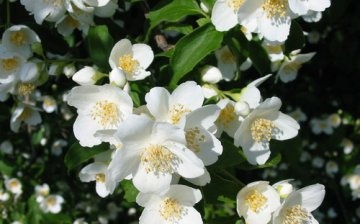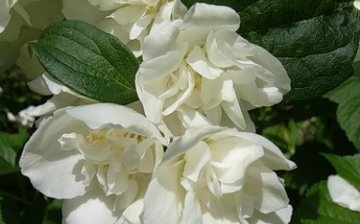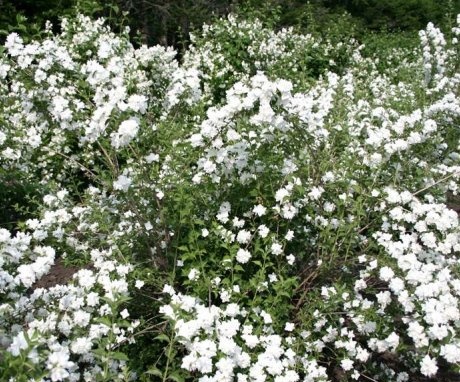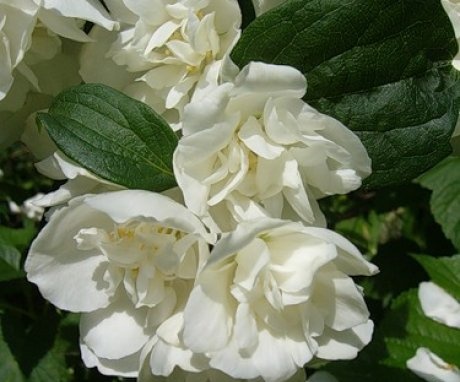How to care for garden jasmine
Garden jasmine (Philadelfus) of the hydrangea family, or the so-called chubushnik (earlier, shanks for smoking pipes, flutes, pipes were made from it due to the unusual hollow structure of the trunk core), refers to rather tall ornamental shrubs: the plant can grow to a height of 1 to 4 meters ... To the jasmine itself (Jasminum), which grows more often in the tropics and subtropics in the form of vines, garden jasmine has nothing to do, except perhaps a somewhat similar aroma. This is a different family of plants.
Content:
Jasmine garden - plant description
Most often jasmine can be found in gardens, parks, it happens that flowering branches of plants are used in cutting. The history of the appearance of the chubushnik in the gardens of Russia goes back to the reign of Tsar Alexei Mikhailovich, to whom these beautiful bushes were presented by German ambassadors. The homeland of garden jasmine is Western Europe, and according to some sources, Asia is possible. There are wild-growing bushes of chubushnik in Europe, North and South America, and even in the Far East and the Caucasus.
Jasmine is famous for its fragrant flowers. When jasmine bushes bloom, the sweet strawberry aroma of its flowers spreads around very intensely.
Usually, the flowers of this shrub are white or slightly creamy in color, their diameter is about 2-5 cm.
Thanks to the many years of work of breeders (among whom I would especially like to mention the Frenchman Lemoine, whose name the variety is even named after, and in Russia Nikolai Vekhov made a great contribution to breeding), many species (about about 30) and varieties of different sizes, up to dwarf ones, can be found on sale. bushes with simple and double flowers. Of course, the latter look more decorative and unusual. There are also varieties with purple flowers.
Some types of garden jasmine bloom twice - in spring and autumn, and undersized varieties often do not bloom at all, this can be adopted by allergy sufferers, since the pungent smell of jasmine is not so pleasant to everyone.
Chubushnik reproduces by shoots, cuttings, layering, seeds quite simply. For reproduction cuttings a branch from 50 cm and a wet hole 50-60 centimeters deep is enough; it is better to plant cuttings in early spring.
Garden jasmine sometimes propagates independently by seed from seed pods. In this case, the planting should be defused so as not to shade and not interfere with the growth of the main bushes. The flowering of jasmine begins approximately in the third or fourth year after planting the cuttings, this is a very grateful shrub. It should be noted that it can be transplanted to another place without any problems.
Features of caring for a chubushnik
Many gardeners ask themselves the question: how to care for garden jasmine so that it pleases the eye with flowering, and its bushes are well-formed and neat?
Jasmine does not belong to particularly capricious and demanding shrubs, but still you should not let it grow on its own.
Before planting a jasmine bush, take care of choosing a suitable location. Make sure that there is no stagnant groundwater at the planting sites, and the composition of the soil is not of particular importance for jasmine, the main thing is that it is not saline and swampy.
It is still better to give an open area well-lit by the sun for jasmine, although plantings can also be placed in the shade, but the flowering will be less lush and the leaves of the plant are thinner.
How to care for jasmine so that the bushes look well-groomed? To do this, it is necessary to regularly examine them and remove old branches, diseased, dried up.
In the spring, during the growth period, the bushes of garden jasmine react well to introduction into soil nitrophosphate and wood ash. Fertilize the chubushnik and infusion of mullein, once a year the bush is poured with slurry.
It is not required to cover jasmine for the winter period, it tolerates frost well, although some varieties in central Russia can freeze under frost, but recover quickly enough after trimming.
Jasmine bushes rarely get sick, unless aphids can strike them. In summer, loosen the soil two to three times, remove weeds and add peat. In a hot, dry season, the shrub should be watered abundantly, otherwise the trunk and branches dry out.
Jasmine in your garden
Jasmine with simple flowers looks very good in mass plantings, especially in the vicinity of lilac, which blooms before it. But bushes with double flowers look more profitable when they are single-handed against the background of other plants.
Mass plantings of garden jasmine are also planted as a hedge. Its spicy fragrant flowers attract bees. In addition, chubushnik flowers are used in the production of perfumery and in the food industry.
The essential oil from flowers has worked well in aromatherapy for treating neuroses, and many people love the delicious green tea with jasmine. And the best part is that jasmine will delight you and your loved ones with its aroma and white shroud of flowers for many years.













